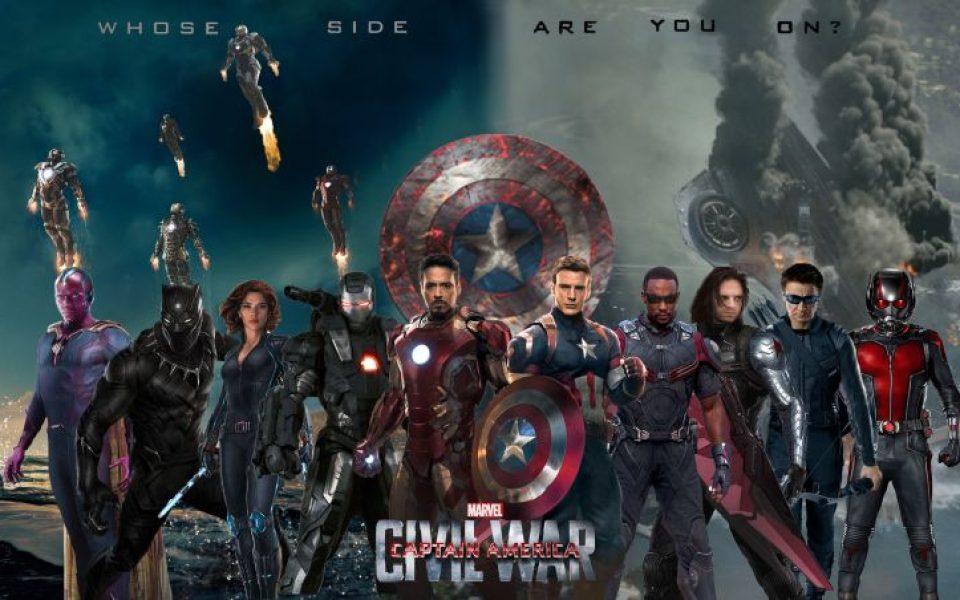by Joe Scott
If there’s one advantage DC Comics has over their “distinguished competition” at Marvel Comics, it would have to be arch supervillain the Joker, a devious, violent criminal who is so evil, so unpredictable, he almost always hijacks the narrative of any story — be it in comics, movies, TV or even video games — that features him. The exact antithesis of Batman, he is easily the most popular villain in comic books, and perhaps even American literature itself.
Marvel Comics certainly made a valid attempt with Fantastic Four foil Doctor Doom, however, none of their supervillains come close to the Joker. But that’s okay.
Populated by oddballs, freaks, monsters and mutants with usually good intentions, the Marvel Universe never really needed great supervillains to begin with. That’s because their roster of anti-heroes were always so good at simply fighting each other in mythological throwdowns of superpowered moral ambiguity. Yes, it’s interesting when heroes overcome the challenges posed by villains. But it’s even more interesting — and perhaps, more like the world we all live in — when two people who feel certain and justified by their own sense of right and wrong go head to head.
Marvel’s unique blend of “hero versus hero” gray-area dilemmas sits at the core of Captain America: Civil War, the third outing in the Captain America film series and the 13th chapter in the multi-billion-dollar Marvel Cinematic Universe that began with 2008’s Iron Man. Thirteen films in eight years is a lot of movies, with many chances to make mistakes. One of the biggest mistakes in the Marvel movie cannon was clearly last summer’s Avengers: Age of Ultron, a long, joyless tornado of warm garbage that was so bad, it should have been accompanied by an apology.
Fortunately, the apology for Age of Ultron came in the form of Civil War, a more streamlined, thoughtful piece of action filmmaking that takes two slices of a Captain America espionage thriller and successfully manages to sandwich an Avengers movie right into the center.
Following the events of Age of Ultron, the once beloved Captain America (Chris Evans) and his Avengers now face a world that is wary of their unregulated, ungoverned war against evildoers as well as the collateral damage caused by their superpowered heroics. When the ever-hasty Tony Stark (Robert Downey, Jr.) believes the best response to the global tension is for the Avengers to submit to the authority of the United Nations, the independently spirited Captain America rebels. Making matters worse, when Cap’s former war buddy Bucky Barnes (Sebastian Stan) is perhaps falsely accused of a terror bombing, the star-spangled super soldier embarks on a quest to unravel the mystery behind the true bomber’s identity.[pullquote]Civil War finds a way to pit the patriotic idealist against the corporate realist in a way that leaves them both somewhat justified, but most certainly compromised.[/pullquote]
These are the ingredients it takes to create the movie’s great Mighty Marvel Misunderstanding, a thrilling slobberknocker in the movie’s second act that pits former allies Captain America and his squad of freedom fighters against Iron Man and his crew in large-scale open melee.
Though clearly not the filmmakers’ intention, in many ways, the film inadvertently mirrors the modern-day conflict at the core of the Republican Party. White, patriotic and rooted in the morals and ideals of World War II-era USA, there are many in the Republican Party who would likely envision themselves as being a Captain America, a well-meaning, ready-for-action libertarian eager to defeat evil by way of brute violence. And like the Republican Party, Captain America now finds his mission is being compromised by the leadership of a womanizing 1 percenter with a big bank account and an even bigger mouth which he often uses to express horrible ideas.
That Civil War finds a way to pit the patriotic idealist against the corporate realist in a way that leaves them both somewhat justified, but most certainly compromised. This is the second best way in which the film manages to capture the spirit and attitudes present throughout the very best Marvel comic books.
The very best way in which the film captures the spirit of Marvel Comics was a greater surprise to me. The film marks the second reboot attempt of a live-action Spider-Man. Keeping in mind that Spider-Man had just been rebooted four years ago in 2012’s The Amazing Spider-Man, I was mistakenly non-plussed that a new iteration of the character would appear in this film. Little did I know that English child actor Tom Holland would portray what is easily the best version of the character anyone could have ever hoped for. Goofy, gawky and always cracking bad puns, this version of the teenaged wall-crawling superhero steals the show in a movie that would have easily been good without him.
Join the First Amendment Society, a membership that goes directly to funding TCB‘s newsroom.
We believe that reporting can save the world.
The TCB First Amendment Society recognizes the vital role of a free, unfettered press with a bundling of local experiences designed to build community, and unique engagements with our newsroom that will help you understand, and shape, local journalism’s critical role in uplifting the people in our cities.
All revenue goes directly into the newsroom as reporters’ salaries and freelance commissions.





Leave a Reply